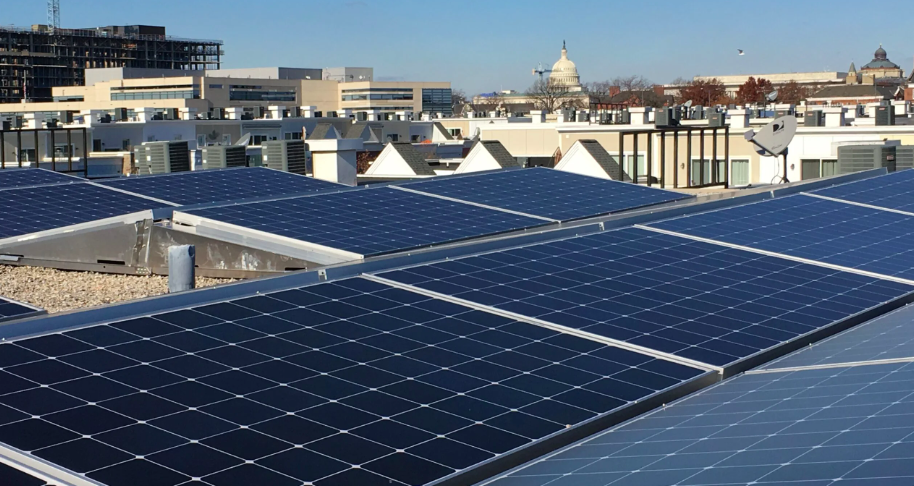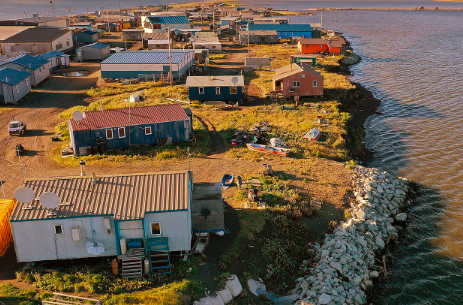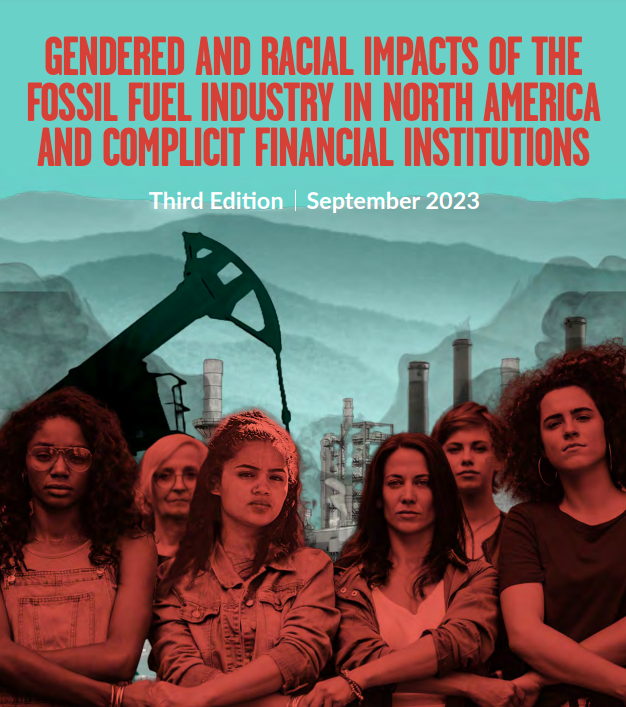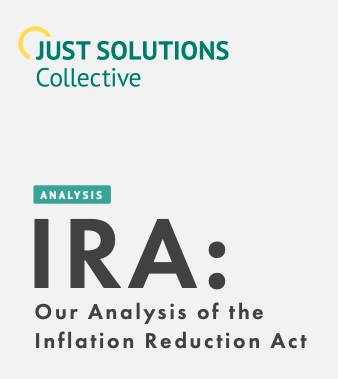Resources
Search below for resources covering the intersection of climate engagement, social science and data analytics.
RESULTS
Unlocking Clean Energy Incentives for Underserved Communities
The Inflation Reduction Act provides an unprecedented opportunity to foster more equitable participation in clean energy development and channel resources into historically marginalized communities. Because of the IRA’s Direct Pay provision, nonprofits, and state, local, and Tribal governments can now access tax credits over 10 years for clean energy projects in underserved communities. This democratizes energy, unlocking the potential for diverse entities across the U.S. to own clean energy assets as a wealth-building opportunity.
New US climate report says land theft and colonization amplify the climate crisis for Indigenous peoples
Indigenous self-determination is a key climate solution — if the federal government can get behind it. The latest National Climate Assessment cites a 2021 study that concluded that Indigenous peoples in the United States lost 99 percent of their territories through colonization, and that the lands that they were forced to move to face higher wildfire risk and worse drought than their traditional homelands. According to the authors, Indigenous peoples across the continental U.S. and its island holdings hail from more than 700 tribes and communities, and while each community has a different relationship with the federal government, all share similar experiences of colonization through stolen land, cultural assimilation, and persistent marginalization. The report also detailed problems with the National Flood Insurance Program, a federal insurance program managed by the Federal Emergency Management Agency that helps homeowners insure against the risk of flooding, something that many insurance companies won’t cover. The program is supposed to help communities mitigate flood risk, but the report found that its implementation in Native communities has been flawed and ineffective.
Gendered and Racial Impacts of the Fossil Fuel Industry in North America and Complicit Financial Institutions
This report finds an indisputable connection between the fossil fuel industry’s practices and negative impacts to African American/Black/ African Diaspora, Indigenous, Latina/Chicana, and low-income women’s health, safety, and human rights in the U.S. and parts of Canada. Specifically, fossil fuel-derived air, water, and soil pollution impact women’s fertility, mental health, and daily work and responsibilities. The negative effects from fossil fuel activity—including extraction, storage and transportation of coal, oil, and gas often in the form of liquefied natural gas (LNG)—stem from direct pollution of communities by fossil fuel companies’ contributions to industrial carbon dioxide and methane. The climate crisis does not and will not affect everyone equally, as factors such as gender, race, and socio-economic status make certain communities significantly more vulnerable to the increasing threats of climate change. Global inequalities, rooted in structural patriarchy, colonialism, white supremacy, and capitalism, continue to place people of the global majority, and specifically women, at risk.
Using Radical Re-Imagination to Create a Vision for Our Future
Stories like Wakanda Forever demonstrate the level of violence that colonization, conquest, and genocide have caused throughout generations—and how we can overcome them. When we think about the future of technology and social innovation, we need to do so through an alternative lens, just like in Wakanda Forever, and believe in a future where everyone has the talent, vision, and access to build projects that are sustainable and beneficial to all. We need to visualize a world rooted in abundance that rejects the idea that Blackness and Indigeneity must continue to be considered nonexistent in the Americas. Creating a new vision is just the start. We also must ask ourselves what this fictional speculation about our futures means for us today, especially those of us in positions to influence philanthropic resources for communities of color. It is our responsibility to be proactive about centering those intersecting narratives and debunk the myth that innovation and creativity come only from those who can access or understand the latest technology or benefit from proximity to centers of innovation and power.
IRA: Our Analysis of the Inflation Reduction Act
The Inflation Reduction Act (IRA) will invest $40 billion total, including $27 billion in direct spending, towards environmental justice communities and low-income residents—despite supporters claiming that the amount is $60 billion. Just Solutions Collective performed its own section-by-section analysis of the IRA’s text, adding up appropriations and other tailored spending to produce its own calculation. In total, the IRA includes $228 billion in appropriations and an additional $324 billion in tax expenditures. Direct appropriations in the IRA for environment, climate, and energy total $145 billion. This is dwarfed by the $270 billion provided in energy-related tax expenditures, through a variety of tax credits intended to incentivize primarily the private sector to invest in different aspects of the alternative energy economy: from mining companies extracting lithium to factories manufacturing inverters to refineries making biomass-based jet fuel to utilities installing solar arrays.
A Decade Of Successes Against Fossil Fuel Export Projects In Cascadia
73% of initially planned oil, gas, and coal export projects in the region have been cancelled since 2012. Fossil fuel executives from dozens of companies once seemed to be salivating over the idea of exporting massive quantities of gas, oil, and coal from the Cascadia coast—but local communities, Tribes, environmentalists, and local governments rejected calls to turn Cascadia into a fossil fuel export terminal. They protested projects’ abrogation of Indigenous sovereignty, the risk of oil spills and damage to sensitive ecosystems, the pollution spewing from coal trains, the climate harms of extracting, transporting, and burning hydrocarbons, and the safety hazards of transporting flammable fuels through populated areas—and for the most part, they’ve won. Since 2012, fossil fuel interests have schemed more than 50 large projects to export coal, oil, gas, or their derivatives from Cascadia’s coast in British Columbia, Oregon, and Washington, and today, 40 of those—a whopping 73%—have been canceled by project backers who faced local opposition, see-sawing energy prices, and regulatory hurdles.
Unfencing The Future: Voices On How Indigenous and Non-Indigenous People and Organizations Can Work Together Toward Environmental and Conservation Goals
This resource showcases entry points for those interested in working with Indigenous communities or strengthening existing work. The goal of this project was to inform and support non-Indigenous conservation groups and conservation and environmental funders’ staff and boards working with Indigenous communities. Recognizing that when we need to learn new information, we often seek out others we know who have undergone similar learning, this guide attempts to recount different journeys taken by organizations and staff. There are two general paths: the journeys of non-Indigenous organizations and funders to work with Indigenous communities or governments and the journeys of Indigenous people, non-profits, and government employees to work with non-Indigenous environmental and conversation organizations and/or funders. Each participant reviewed their organization’s draft for accuracy and clarity, with many providing content.
Applying an Alaska Native Lens to Climate Sovereignty, Economic Justice, and Healing
The Alaska Just Transition Collective is working to build a solidarity economy that will help Alaska move towards a just transition that cultivates grassroots processes incorporating indigenous sovereignty and stories from the land. Indigenous economic frameworks for redistributing wealth and resources must inform an approach to economic recovery. Traditional indigenous economic frameworkers ensure the health and well-being of the community and center the concept of reciprocity.
Why Intersectional Stories Are Key to Helping the Communities We Serve
Many people communicating for social change are exploring how to tell diverse and inclusive stories that center marginalized communities while building understanding about how inequality persists. Intersectionality is an important tool to help us tell great stories that help us understand systemic issues. Five guiding principles to telling intersectional stories: Show, don’t tell; Provide historical context; Uplift the voices of marginalized people; Tell whole stories; and, Radically reimagine the world.
GenGND Conversation with Kaniela Ing
Hawaiian organizer and strategist Kaniela Ing describes his theory of politics in this podcast episode. Kaniela is the Climate Justice Director with People’s Action, former state legislator, and former candidate for U.S. Congress. He argues that building power only happens through organizing, and insider lobbying only works to “wield” power, even though traditional advocacy organizations often view power only through lobbying. Kaniela says that growing up in a working-class, conservative household showed him that progressive organizers need to be understanding and empathetic and can win working-class Republicans over to progressive causes. He also describes (harmful) capitalist, colonial influences on Hawaiian local economies.
Pagination
- Page 1
- Next page








